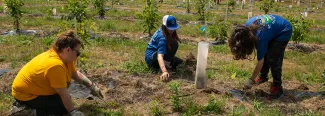
On a recent hot and humid Friday morning, with help from University of New England professor of environmental studies Tom Klak, Ph.D., a group of teens became one with nature.
They were students with the Portland Youth Corps (PYC), a summer program that promotes personal and professional growth through community service, environmental stewardship, and hands-on conservation opportunities. Their mission that Friday morning was to assist Klak at a site in Cape Elizabeth, where he has established an orchard of seedlings in his scientific mission to restore the American chestnut tree.
Once touted as “the redwood of the East,” the tree was all but destroyed during the last century by a fungal blight that is still killing the few remaining trees today. The blight has wiped out an estimated four billion trees. To revitalize this keystone species, Klak has collaborated with a team of scientists to create fungal blight-tolerant chestnut seedlings by inserting a gene from wheat into them, which protects the plant from the blight.
UNE is the only place in New England and one of the few places in the country that has the seedlings in the ground, and on July 8, the PYC students got to see this scientific marvel in person.
At the site, in a heavily wooded area on the brinks of Casco Bay, sit dozens of rows of transgenic chestnut seedings. As part of their day, the PYC teens helped remove invasive plant species that could interfere with the project. They also learned from Klak and his research student Virginia May (Environmental Science, ’24), a UNE Summer Undergraduate Research Experience (SURE) grant recipient, about the chestnut restoration project.
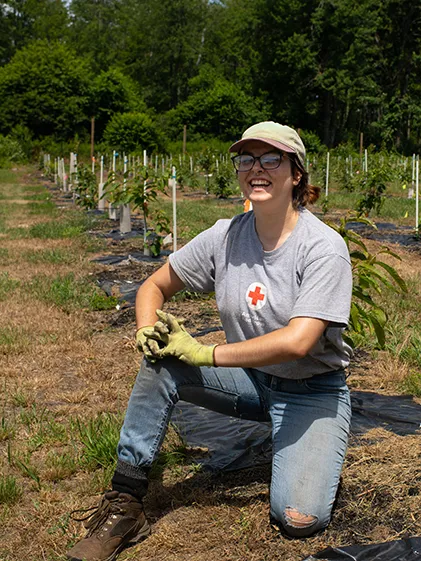
Virginia May ’24
“Teaching and sharing my passion with others, especially those who are currently discovering their own interests, is not only fulfilling but insightful,” May reflected. “The climate and biodiversity crises are an ever-present and crushing weight, especially on the younger generations; my work on the American chestnut project is my small way to help a cause which connects people all over the world. Simply working in the field with the Corps gave me hope for our project and our world’s future."
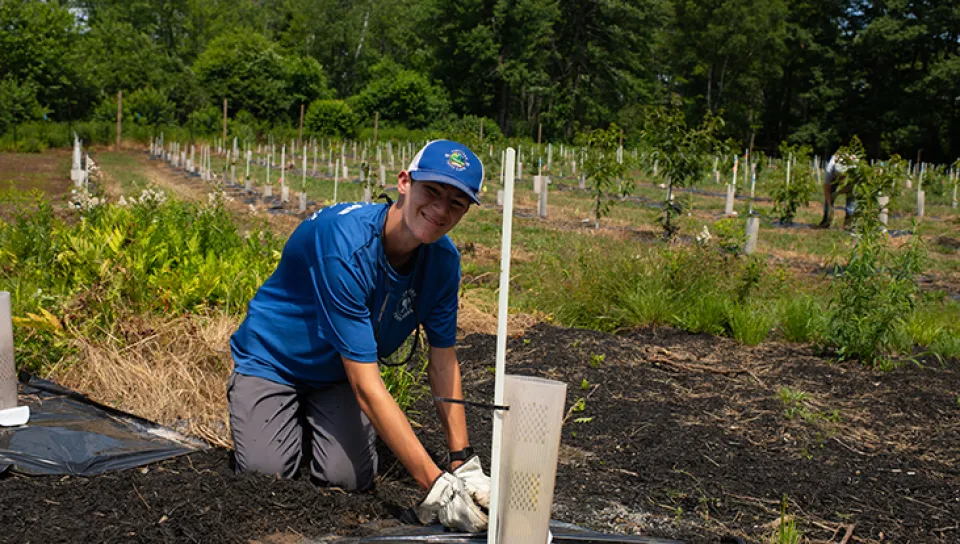
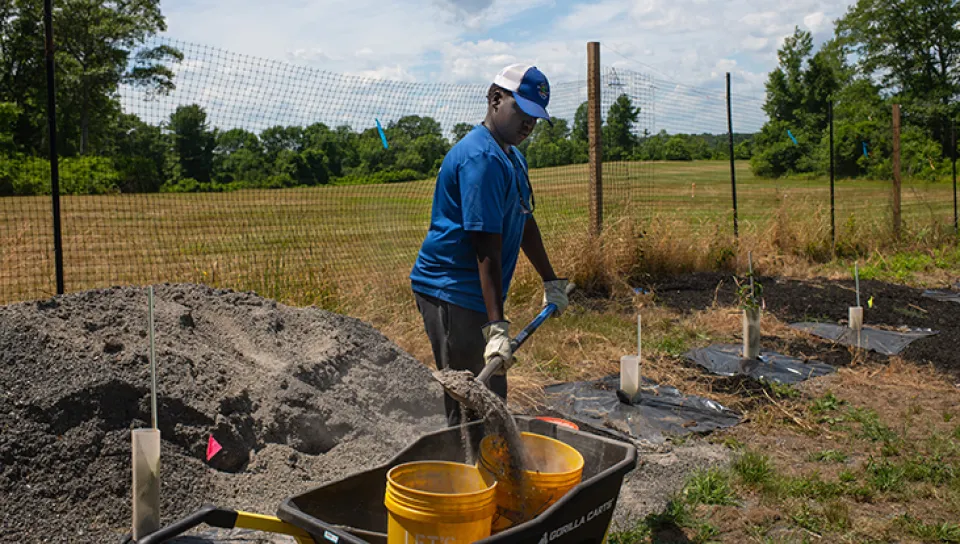
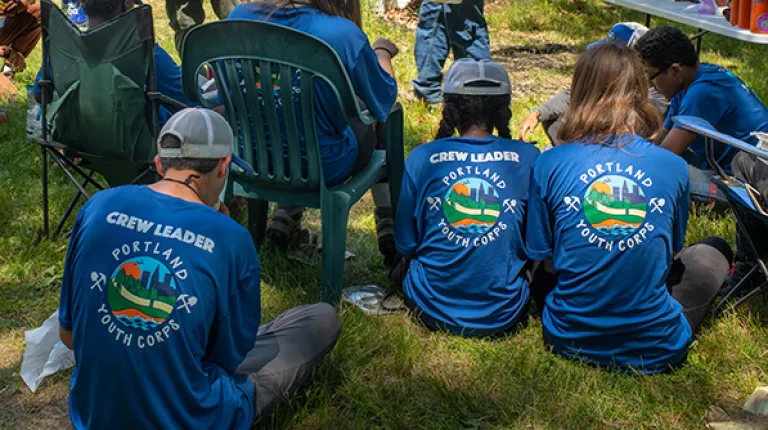
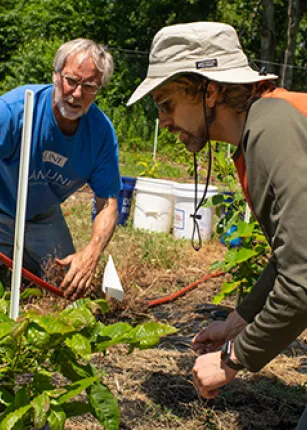
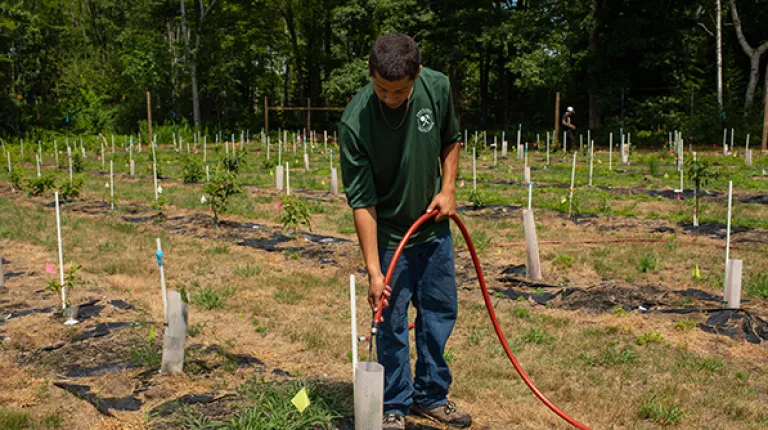
Michael Vincent, leader of the PYC, said the experience will help introduce young people to the often intimidating world of scientific inquiry.
“I think young people tend to believe that making a difference requires advanced college degrees, lab work, and writing thesis papers; however, being able to come out and see what Dr. Klak and his team are actually doing right here in their own community and getting their hands dirty removes some of that intimidation factor,” Vincent remarked. “The teens get so excited as they begin to realize that they can pitch in and have a genuine role in helping to shape the future of conservation and the natural world right now."
PYC volunteers participate in several conservation projects — including trail building and maintenance, invasive species removal, and assisting with community gardens — but PYC participant Natalia Lima said the chestnut project was particularly inspiring for her.
“This specific project was a greater opportunity to try new things and meet new leaders,” she said. “It feels good when you give back to the environment and the community, and it was inspiring to see all the work that we did in one day.”